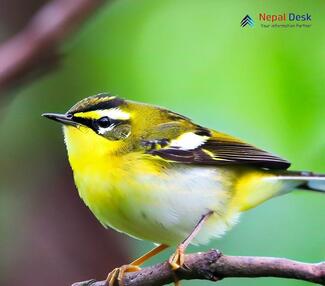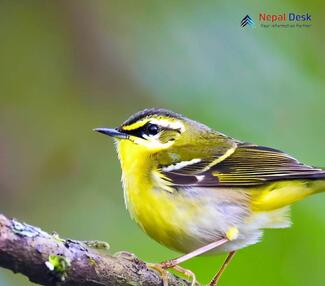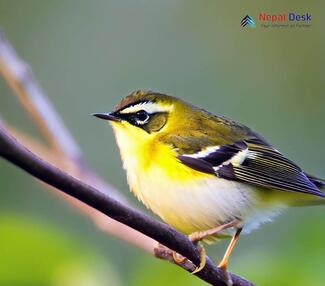The Yellow-vented Warbler (Phylloscopus cantator) is a small, yet fascinating bird found across the Himalayas. Though it may not be as popular as other avian species, this tiny warbler boasts numerous captivating features that are truly worth exploring. In this article, we'll delve into the taxonomy and physical attributes of the Yellow-vented Warbler, as well as its habitat, diet, breeding and nesting behaviors, and its presence in the beautiful country of Nepal.
Taxonomy and Physical Features
Belonging to the family Phylloscopidae, the Yellow-vented Warbler is classified under the genus Phylloscopus. This diverse genus encompasses over 70 leaf warbler species found throughout Eurasia. The Yellow-vented Warbler is distinguished by its olive-green upperparts with faint dark streaks on the mantle. Its pale yellow underparts contrast against its characteristic yellowish vent—giving it its name.
Adult Yellow-vented Warblers typically reach 11 to 12 centimeters in length and weigh between 6 to 9 grams. Their bills are dark above while being paler below; they also possess notably long wings compared to their body size—an attribute shared among the Phylloscopus genus.
Habitat and Diet
Yellow-vented Warblers primarily thrive in subtropical or tropical montane forests— residing within an altitude range of 2,100 to 4,300 meters above sea level. Preferring dense shrubberies for shelter, these warblers are known to inhabit mixed coniferous forests with a rich assortment of rhododendron bushes.
When it comes to their diet, these tiny warblers are insectivores, hunting for insects such as ants, caterpillars, and other small arthropods. They adeptly search for a meal amidst the foliage, employing their quick and agile movements to hop between leaves and branches.
Breeding and Nesting
The breeding season for Yellow-vented Warblers commences from May to July. Males begin by producing a high-pitched song to attract potential female mates. Once a suitable mate is identified, nest-building becomes the next crucial step. Yellow-vented Warbler nests often take the form of small and intricately woven cups made primarily of leaves, moss, grasses, and other plant materials. These nests are generally suspended in shrubs or trees at least 1 to 3 meters above the ground.
Following nest construction, females typically lay 3 to 4 small whitish eggs that feature intricate brown spots. The incubation period lasts approximately two weeks, presided over by both parents sharing duties. Once hatched, parental care endures until the fledglings are ready to undertake life on their own.
Presence in Nepal
Nepal is home to a myriad of bird species; amongst them, the Yellow-vented Warbler holds a notable presence across various national parks and protected regions. Tourists visiting places such as Langtang National Park or Sagarmatha National Park may be fortunate enough to spot these charming birds amidst the enchanting landscapes of this fascinating country.
In conclusion, the Yellow-vented Warbler is an intriguing bird species that contributes significantly to the rich biodiversity of the Himalayan region. With their distinctive physical features, unique habitat preferences, insectivorous diet, breeding patterns, and nesting behaviors, along with their noticeable presence in Nepal's montane forests—these birds truly deserve appreciation from birdwatchers and nature lovers alike.




